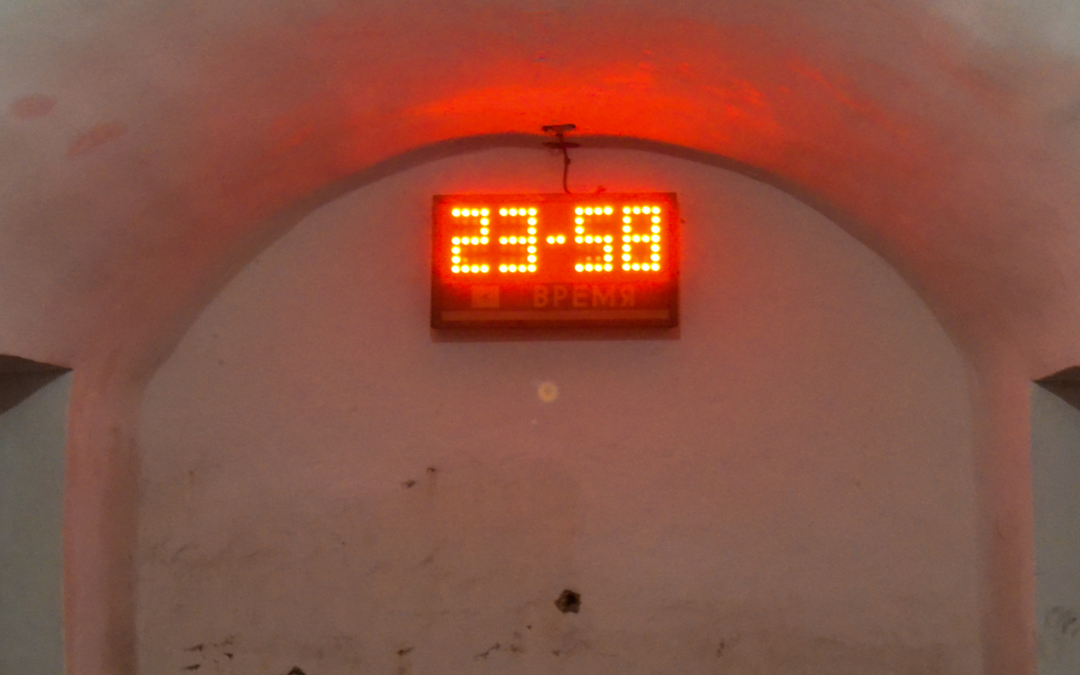“We stand at the brink of a second nuclear age. Not since the first atomic bombs were dropped on Hiroshima and Nagasaki has the world faced such perilous choices,” warned the Board of Directors of the Bulletin of the Atomic Scientists in the January/February 2007 issue of its magazine of the same name. The board was moving the hands of its iconic Doomsday Clock forward from seven to five minutes to midnight, to indicate this crisis moment.
As the current president of this organization, I know first-hand that any movement of the hands attracts considerable international attention. But this move at the beginning of 2007 was different. After acknowledging North Korea’s test of a nuclear weapon, recognizing a renewed U.S. emphasis on the military utility of nuclear weapons, and tallying the presence of approximately 26,000 nuclear weapons in the United States and Russia (then), the board introduced an unprecedented twist. It concluded that “the dangers posed by climate change are nearly as dire as those posed by nuclear weapons. The effects may be less dramatic in the short term than the destruction that could be wrought by nuclear explosions, but over the next three to four decades climate change could cause drastic harm to the habitats upon which human societies depend for survival.” With this, climate change was added to the setting of the Doomsday Clock, thus altering our consciousness about global catastrophe.
In adding climate change to the time of the Doomsday Clock, the Bulletin’s Board of Directors answered a persistent question: Was the metaphoric Clock a measure of how close humanity is to nuclear annihilation, or is it a measure of how close humanity is to destroying itself with technologies of its own making? Back in 1947, when the Clock was first exhibited as a magazine cover, there was no need to distinguish between the two questions. Only one technology – nuclear weapons – had the ability to destroy life on earth as we know it.
By the early 1960s, however, Bulletin contributors were raising the alarm that humans were causing potentially devastating changes to the atmosphere. In 1978, the Bulletin published a cover story asking, “Is Mankind Warming the Earth?,” which answered an “unqualified yes.” As Tammy Kim of the Columbia Journalism Review subsequently noted in a 2010 article, “the Bulletin of the Atomic Scientists may be the only outlet whose approach to climate change is explicitly existential,” and its warnings go back decades.
Including climate change in the annual Doomsday Clock’s setting remains one of the most controversial decisions taken by the organization – and prompting confusion for some. The time scale of the climate crisis is decades, whereas a nuclear exchange could wipe out civilization in minutes. Yet, there are gradations to climate change that don’t exist on the nuclear battlefield. Small, zero sea-level civilizations, such as six of the Solomon Islands, are already being wiped out by the rising seas of climate change. It is hard to imagine the devastation of a nuclear exchange remaining as local or slow rolling.
One important similarity that joins the threats of climate change and nuclear weapons is that these global challenges demand global responses. This requires action at the global and local levels, with state actors working in concert and local citizens demanding accountability from them. Today, global agreements to contain nuclear proliferation and climate change are anemic and approached far less urgently than their danger requires. There is very little will, and the political landscape appears stacked against coordinated political action. For these reasons, the Clock is set today at 90 seconds to midnight, closer than ever before.
Despite such listlessness, we recognize how close we’ve come to metaphorical midnight before, and that it was through political, scientific, religious, and social actions that we have been able to push the Clock away from midnight. Concerted political action has moved the international community away from the brink and created confidence-building measures, treaties, verification regimes, moral red lines, and scientific monitoring to reduce risk and create a safer future.
The value in combining climate change and nuclear risk into one measurement is to highlight the question “is humanity at greater risk today than at previous moments in our history?” Until the late 20th century, one could ask and answer this question by focusing only on nuclear weapons. By the early 21st century, it was no longer possible to ignore climate change when answering this profound yet simple question. Our Board decided in 2007 that the Clock is not only about nuclear weapons; rather, it is about how close we are to destroying life on earth as we know it because of unmitigated climate change and nuclear weapons.
The Clock has made the threat clear. Are we willing to reduce and eliminate this deadly mix?
Download a PDF of this issue »
Listen to a podcast with the editors from this issue »
Written by Rachel Bronson, President & CEO of the Bulletin of the Atomic Scientists.





